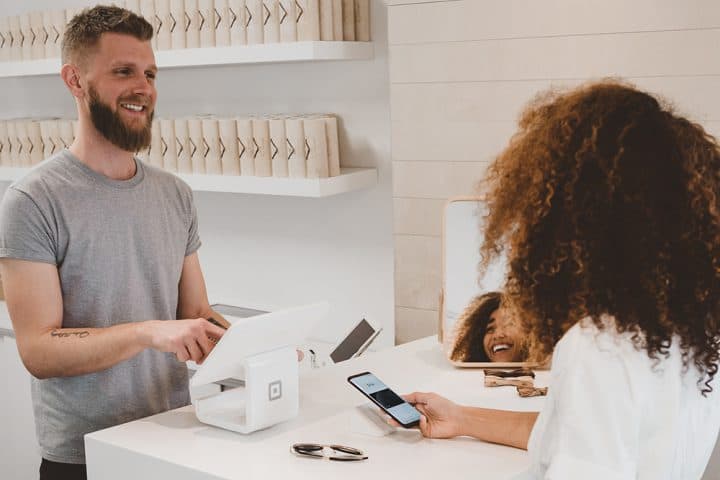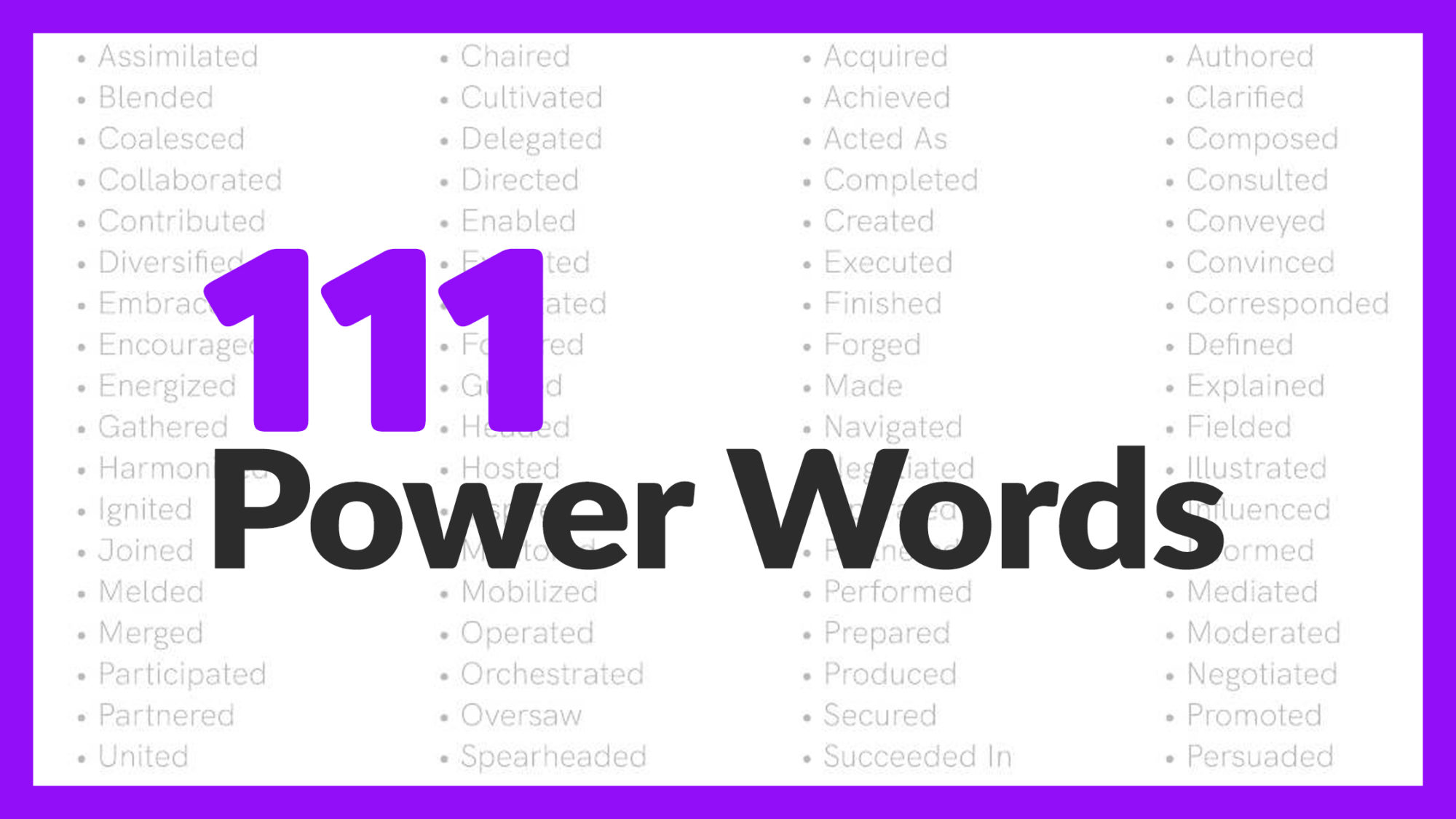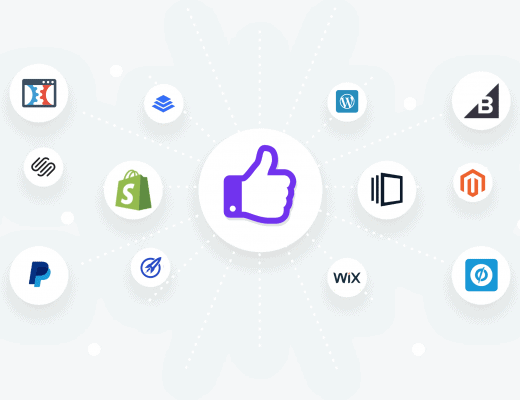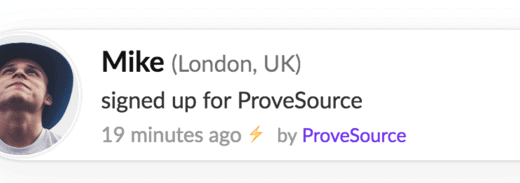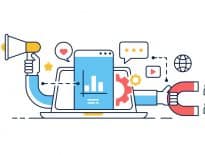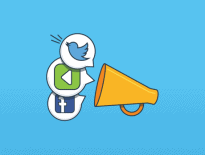Perhaps you were imagining your customers as being on a journey with your brand. What if instead, you imagined them like the ouroborus: that ancient symbol of a serpent eating its own tail.
If that sounds a little bit frightening, it’s not meant to be. That means you properly view your customer experience as a cycle, instead of constantly struggling to bring in new prospects to your marketing and sales funnel. You keep your customers buying again and again from your company, and therefore delivering ever-increasing value.
You turn that introductory first date with your customer (first-purchase) into a mutually beneficial and satisfying long-term relationship with your brand (repeat-purchaser).
What is Customer Lifecycle Marketing?
Customer Lifecycle Marketing (CLM) is the alternative to a single-purchase view of customers that neglects the bigger picture – also known as the traditional sales funnel.
“Customer lifecycle marketing attempts to stop customers from reaching the end of their buyer’s journey and instead, gets them to circle back and continue being an active consumer.” – Alexa
The best brands – like Starbucks, and Apple – understand that continually investing in their customers is the best way to drive revenue. Starbucks has raving fans, Apple has evangelists.
All businesses have unique customer lifecycles, as every customer is different. Some may be long or short. The goal is to turn one-time customers into repeat customers with focused activity that moves them through the lifecycle.
As Ometria points out, customer lifecycle marketing is made up of three core elements:
- Acquisition – exposing relevant customers to your brand and getting them to your website or app
- Activation – getting your targeted traffic to convert into customers
- Retention – minimizing churn and keeping customers coming back for more
There are a number of different models for CLM, with the older ones focusing more on a funnel or a set of steps. The buyer’s journey was primarily seen as sequential, a bit like the plot of a book. Now, it’s about being fluid, and recognizing that there may not be one single customer journey.
“Good marketers see consumers as complete human beings with all the dimensions real people have,” says Jonah Sachs, entrepreneur.
Customers move at their own pace. Some buyers will pass through the same stage more than once, and some will miss out one or more stages completely.
Marketo uses the following model:
What Are the Benefits of Customer Lifecycle Marketing?
There are many benefits to Customer lifecycle marketing. Instead of targeting customers with the hard sell, it’s about opening up pathways for customers to engage with your business – on their own terms. You can be more empathetic towards your customers, and attract them by providing value.
You’ll also see lower marketing costs overall and higher marketing revenue. CLM is about improving your long-term profitability by boosting retention rates and combating customer churn.
You will also earn yourself more loyal customers, who have the potential to become advocates. They will recommend your brand to new customers by word-of-mouth. In this way, the CLM model becomes a self-sustaining cycle – like the ouroboros.
Now we’ll go through each phase of the customer lifecycle.
Awareness
Customers cannot become a part of your lifecycle if they have never even heard of your company. Your first action must be to bring a steady stream of new customers into the lifecycle by introducing them to your brand.
This is the stage of mass marketing, building brand awareness, and increasing understanding of your products and services. It’s the stage that companies have traditionally focused a lot of attention on – for very good reason. It’s still an important phase, but just one part of the overall picture.
Unfortunately, this is the hardest part of the lifecycle – where you have to spend the most money to make an impression on a new audience. Potential customers might have no familiarity with your brand, and may not even realise that your products would benefit them.
Your goal is to get leads to become aware of your company as well as its offerings without being salesy.
Recommendations to encourage customer action:
- Create an SEO strategy to drive targeted leads who have never heard of your company back to your website
- Create top-of-funnel content that’s focused on being informative, addresses your buyer’s potential paint points, and positions your brand as a leader
- Invest in paid advertising like search and social media ads, sponsored posts, or influencer marketing
- Develop a word-of-mouth marketing program using customer advocates
Engagement
This next phase for prospective customers is more active than the awareness phase. Though not quite customers yet, your leads want to learn more about your offerings. This is where you nurture them and provide value.
Customers are looking for channels to engage more with you, such as social media, your newsletter, or company blog. You need to provide a mixture of content that customers find interesting or helpful, and more direct marketing techniques that can encourage customers to convert.
During this stage, customers may be comparing your products with similar ones from your competitors. For example, a customer might want to buy an ereader, but be unable to decide between a Kobo or a Kindle. It’s up to you to show them why your offering is the best fit for them.
You need to be ready to meet customers across all channels, including social media. For example, omni-channel shoppers have a 30% higher lifetime value than people who shop using only one channel.
In another study conducted by Nextiva, 66% of consumers have used at least 3 different communication channels to engage with your brand. Another statistic that strongly states the importance of omni-channel experiences.
Recommendations to encourage customer action:
- Create explainer videos to educate customers about aspects of your products or industry
- Automate and scale your ability to engage with customers by making use of chatbots. You can create triggers based on time-on-site as well as event-based triggers to interact with customers on a personalized level
- Use conversational marketing via channels like live chat, email marketing, and social media to proactively help customers learn more about your product or service
- Offer a first-purchase discount or first-purchase free delivery to encourage customers to convert
Evaluation
This phase is when your leads are the closest to buying your products. Your potential customers are actively evaluating your products, reading reviews, comparing you to other brands. It’s also the stage in which existing customers may be converted again into making a purchase.
It’s important to provide customers at this stage to educate prospective customers about your product or service, the features you offer, and most importantly the benefits that they can expect if they use your business. And these leads don’t necessarily want to work hard to get that information. This is where inbound marketing can really come into its own.
If you’re B2B, this would involve management teams contacting different vendors to evaluate who has the right features for the best price. If you’re B2C, your customers might be looking for free samples or introductory offers.
To boost collaboration between your team, pay attention to your communication channels. With complex projects like lifecycle marketing, there’s many overlapping tasks that can lead to misunderstandings if not managed right.
Recommendations to encourage customer action:
- Create e-books and continue to write blog posts that help nurture leads and helps them evaluate your brand
- Use webinars or recorded video tutorials to show how your product or service can be useful to your intended customers
- Make use of retargeting campaigns to stay top-of-mind with leads that have recently visited your website
- Produce detailed product comparisons so customers can evaluate your products against competitors
- Create case studies by industry that position your product or service as a solution
- Make use of targeted lead magnets to build and segment your email lists so you can send email marketing campaigns to your leads
- Offer social proof on your website such as customer testimonials and reviews, using a solution like ProveSource
Purchase
The purchase phase is the most exciting part of your business. This is when customers are actively buying your products, and taking advantage of self-service support such as a customer knowledge base, chatbots, or live chat.
It’s likely you won’t need to do as much marketing during this particular phase, but instead support customers during the purchase decision. For example, 23% of customers have abandoned their cart because of a too complicated checkout process.
Rather than pushing more products with the hard sell, you need to facilitate the conversion, and make sure the customer has no reason to change their mind. Make sure you provide an easy way for customers to find answers to any questions on their own or have reps on hand to instantly answer questions that customers have about your products.
Recommendations to encourage customer action:
- Create detailed and targeted landing pages that speak to audience’s pain points
- Optimize sales forms and if you’re in e-commerce streamline your cart to checkout process
- Encourage more customers to convert by building trust in your business through the use of social proof; showcase recent product purchases, testimonials, and reviews
- Make use of win-back promos as well as exit popups
- Think about offering a free trial
- Find ways to help customers with getting the most out of your product
- Have a robust self-service strategy that allows customers to answer their questions
Post-Purchase/Retention/Loyalty
Also known as the growth phase, this is when you can cross-sell or up-sell complementary products to your existing customers. Selling more over time increases their overall value to your business, and that’s why you bring existing customers back around through the lifecycle.
This phase ideally lasts as long as possible as your buyers become customers for life. It’s about striking a balance between sending out post-marketing materials to customers, and not contacting them at all. The key is to make sure you offer them continuous value so they will be persuaded to buy from you again, rather than unsubscribing from your email list.
Your goal is to ensure your customers become repeat buyers by providing exceptional customer service as well as predicting when they would like to buy from you again, and what additional products they might need.
Recommendations to encourage customer action:
- Find ways to segment your audience so that you can personalize communication
- Use in-app messaging, product tours, email, and knowledge base material to successfully onboard as well as continue to educate your customers with using your product or service
- Make sure you send your post-purchase follow-up surveys, and customer care content
- Be proactive, instead of just reactive, with customer support and service to ensure customer success
- Find ways to show customer appreciation with a human touch
- Send occasional email marketing campaigns for an opportunity to upsell as well as cross-sell
- Reward loyalty with exclusive promotions and discounts
Advocacy
The advocacy phase is where you turn customers from buyers into promoters of your brand. Loyal, happy customers often want to share your products with others, and this is where the cycle completes itself.
When customers have developed loyalty to your brand, they may be willing to vocally advocate for your brand, products, and services. They will help you acquire more new customers through word of mouth. 72% of customers will share a positive experience with six or more people.
That’s why social proof is the secret sauce to your customer lifecycle marketing efforts – for example, 83% of people trust the reviews of their peers over advertising. Prospective customers are more likely to buy from you when others like themselves recommend products.
Recommendations to encourage customer action:
- Calculate NPS® score to help you identify those customers that are already advocates
- Offer promotions that reward repeat customers such as referral discounts
- Ask customers to post online reviews of your products to help other customers
- Develop a customer loyalty program that rewards repeat customers
- Find ways to encourage customers to generate content (UGC) and promote on their own websites or social media
Wrap Up
Hopefully now you can see the value in investing in your existing customers. Not only do they spend more, they ultimately have the power to bring in new customers.
Although it takes effort in the short-term, customer lifecycle marketing has the potential to become more self-sustaining than traditional approaches. You get more bang for your buck when you treat sales and marketing as a cycle, rather than a funnel.

